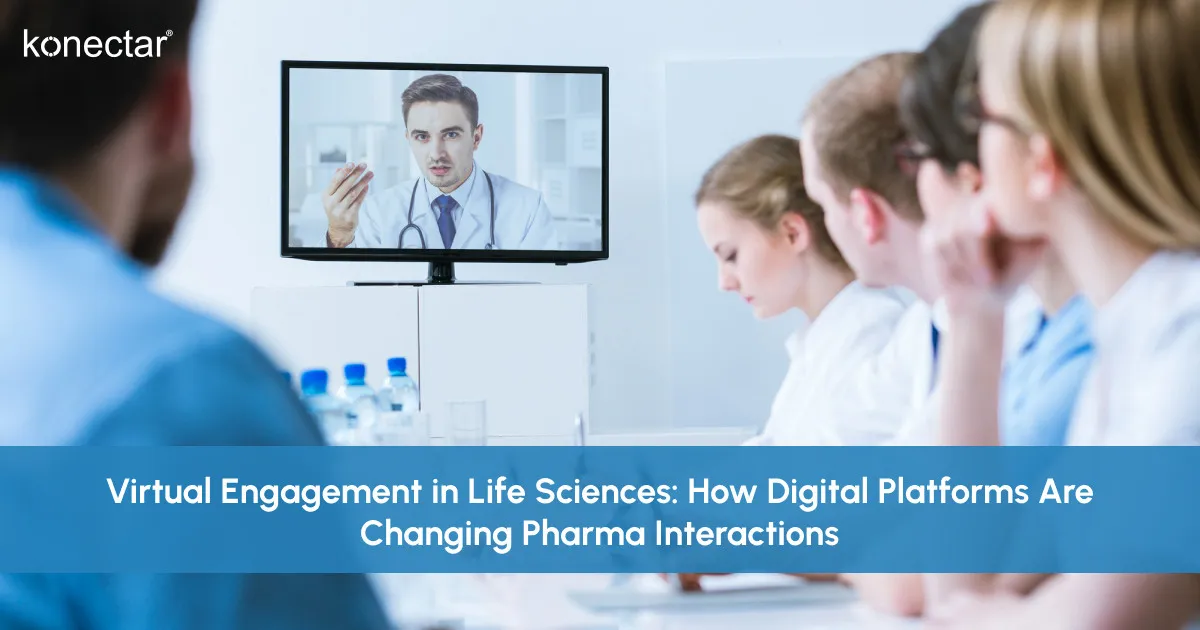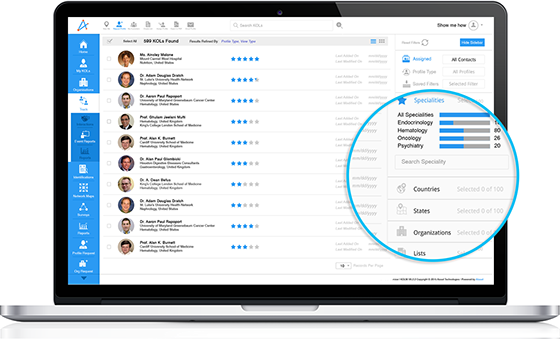22-04-2025
Virtual Engagement in Life Sciences: How Digital Platforms Are Changing Pharma Interactions

The pace at which life sciences has expanded, both scientifically and commercially, has quickly outgrown the limits of traditional engagement. This scale of innovation included new therapies, expanded geographical boundaries, and global trials, prompting life sciences companies to rethink how they connect with stakeholders.
As pipelines accelerated and product portfolios became more complex, Medical Affairs teams needed to reach more stakeholders more frequently and with greater precision.
Virtual platforms emerged not just as a convenience but as a solution to this growing complexity.
This isn’t about replacing face-to-face interactions—it’s about extending the reach and effectiveness of Medical Affairs in a landscape that no longer runs on linear timelines or local touchpoints. The question now isn’t whether to adopt virtual engagement; it’s how to integrate it more strategically.
In this article:
- 1. Why Life Sciences Companies Turned to Digital Engagement: Key Challenges
- 2. Use Cases: How Life Sciences Companies Are Scaling Engagement Through Digital
- 3. Best Practices for Life Sciences Companies: Aligning Teams on Digital Engagement
- 4. Life Sciences Companies: Leading the Digital Shift from Strategy to Execution
- 5. FAQs
Why Life Sciences Companies Turned to Digital Engagement: Key Challenges
This shift towards virtual engagement wasn’t just driven by growth; it was also shaped by a few challenges that made traditional models harder to sustain. These pressure points included:
Limited Access to Healthcare Professionals (HCPs)
Increasingly busy clinicians had less time for in-person meetings. Restrictions, global or local, made field access inconsistent or impossible.
Compressed Timeline for Scientific Communication
As drug development cycles quickened in pace, especially in high-pressure therapeutic specialties in life sciences, such as oncology or rare diseases, a growing need arose to disseminate clinical updates faster than traditional formats allowed for.
Globalization of Stakeholder Networks
Medical Affairs needed to engage stakeholders across multiple time zones and geographies—something digital platforms made far more scalable.
Use Cases: How Life Sciences Companies Are Scaling Engagement Through Digital
Driving Scientific Exchange with KOLs and HCPs
Digital platforms have enabled more structured, consistent, and timely scientific communication. Instead of relying solely on field visits or conference interactions, life sciences companies can now engage KOLs and HCPs through webinars, one-on-one virtual meetings, and interactive digital content.
This allows for ongoing dialogue, quicker response to clinical inquiries, and a more substantial regional presence, without logistical delays, benefits that are particularly valuable in global life sciences operations.
Transforming Stakeholder Education and Product Launches
The timelines in the life sciences industry are tight, and the market is quite competitive. In such a scenario, getting the right information to the right audience becomes critical. Virtual engagement supports rapid content dissemination during launch phases—whether through tailored e-detailing, training modules for MSLs, or on-demand resources for HCPs.
These tools make education more accessible, measurable, and adaptable across global markets.
Elevating Decision-Making Through Virtual Advisory Boards
Advisory boards are central to gathering insights, but coordinating them across geographies used to take substantial efforts. Virtual engagement simplifies this, allowing pharma to host shorter, more focused sessions that still capture critical input.
Plus, with built-in polling, live chats, and post-meeting analytics, teams can gather more structured feedback without compromising quality, something quite relevant for top life sciences companies that operate in multiple markets.
Scaling Events, Conferences & Stakeholder Touchpoints
Large-scale events have always played a key role in pharma engagement. Digital platforms now allow these to scale far beyond physical limitations. Life sciences companies can host virtual symposia, on-demand sessions, and interactive Q&A sessions that reach hundreds or thousands of stakeholders globally.
Best Practices for Life Sciences Companies: Aligning Teams on Digital Engagement
Digital engagement only works at scale when the right internal alignment is in place. That means getting cross-functional teams—Medical Affairs, Commercial, Regulatory, Compliance, and IT—on the same page from day one.
These practices are more applicable for life sciences companies managing complex product portfolios.
Shared Objectives
Every team approaches digital engagement with different goals. For Medical, it’s about scientific credibility. For Commercial, it’s reach and impact. Alignment begins with defining what success looks like across teams and where those goals intersect. Setting joint KPIs upfront helps ensure that digital initiatives serve both compliance and strategic outcomes.
Early Partnerships
Digital business platforms move fast, but content can stall without pre-aligned review workflows. Involving regulatory and compliance partners early helps establish streamlined content approval, governance, and risk management processes.
Standardized Tools
When teams use different tools to engage the same stakeholders, consistency suffers. Choosing integrated platforms that support CRM, virtual events, and content tracking allows for smoother execution and unified stakeholder experiences. It also enables better data sharing across functions.
Feedback Loops
Regular debriefs between teams—Medical, Commercial, and beyond—help identify what’s working, where messaging needs to shift, and how to adjust strategies based on real-time insights. This also ensures that all teams learn from one another, not in silos.
Life Sciences Companies: Leading the Digital Shift from Strategy to Execution
Digital tools have become central to how life sciences companies connect, educate, and collaborate. But making it work long term means more than just adopting tools. It requires teams to embed digital thinking into their daily operations.
That means establishing the right platforms, enabling cross-functional collaboration, and continuously refining the approach based on data and feedback. Life sciences companies are rethinking how they engage HCPs and reengineering the entire model through digital-first strategies.
FAQs
- Is virtual engagement replacing in-person interactions in pharma?
No, it's expanding reach and complementing traditional models with flexibility and scale.
- How does digital engagement benefit Medical Affairs teams?
It improves stakeholder access, accelerates scientific exchange, and enhances data visibility.
- What teams should be involved in the digital engagement strategy?
Medical, Commercial, Regulatory, Compliance, and IT—alignment across functions is key.





